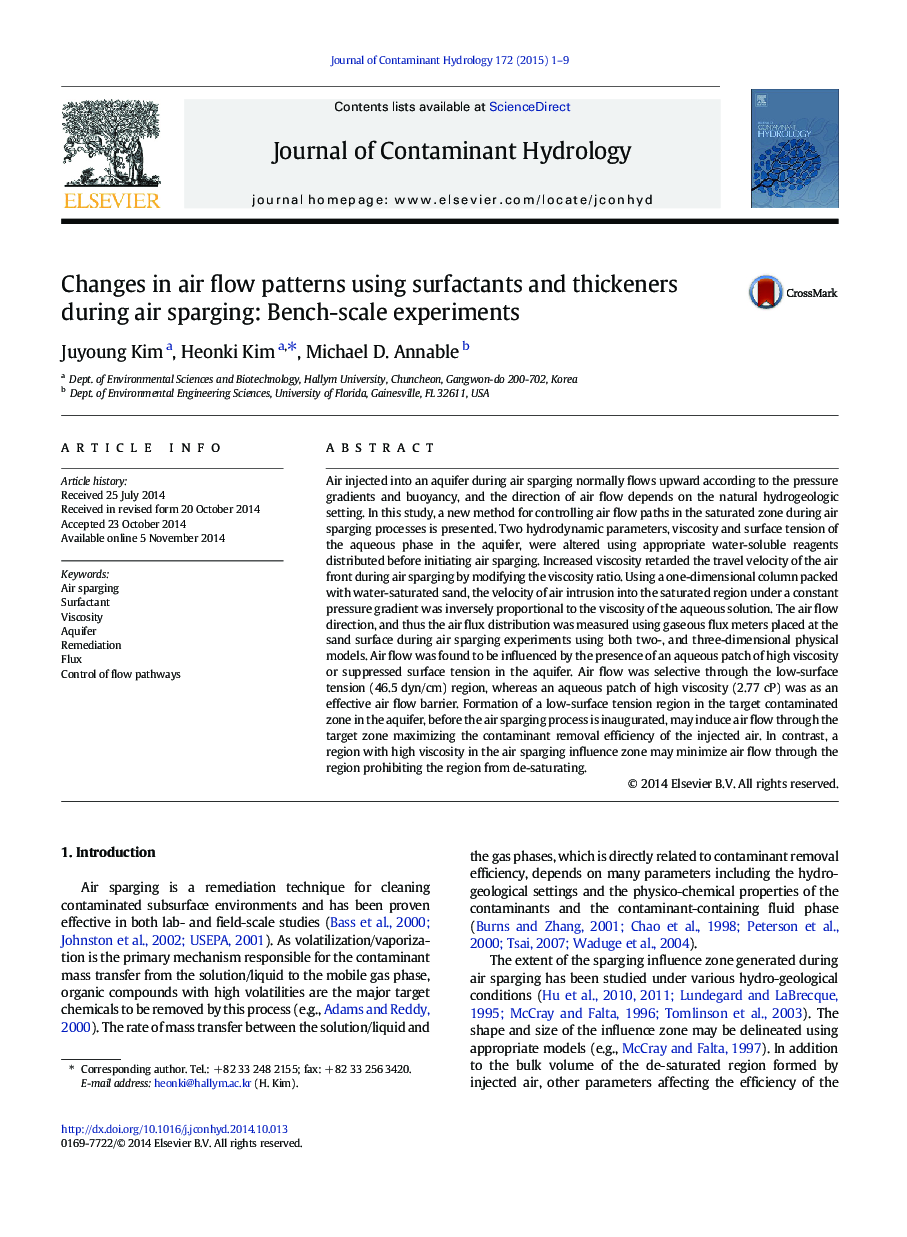| کد مقاله | کد نشریه | سال انتشار | مقاله انگلیسی | نسخه تمام متن |
|---|---|---|---|---|
| 4546485 | 1627036 | 2015 | 9 صفحه PDF | دانلود رایگان |
• A method for controlling the air flow paths during aquifer air sparging is proposed.
• Injected air flows preferentially through a region with low surface tension.
• Region of high viscosity behaves as a barrier resistant to air flow.
• Air focused on the target zone is expected to enhance contaminant removal efficiency.
Air injected into an aquifer during air sparging normally flows upward according to the pressure gradients and buoyancy, and the direction of air flow depends on the natural hydrogeologic setting. In this study, a new method for controlling air flow paths in the saturated zone during air sparging processes is presented. Two hydrodynamic parameters, viscosity and surface tension of the aqueous phase in the aquifer, were altered using appropriate water-soluble reagents distributed before initiating air sparging. Increased viscosity retarded the travel velocity of the air front during air sparging by modifying the viscosity ratio. Using a one-dimensional column packed with water-saturated sand, the velocity of air intrusion into the saturated region under a constant pressure gradient was inversely proportional to the viscosity of the aqueous solution. The air flow direction, and thus the air flux distribution was measured using gaseous flux meters placed at the sand surface during air sparging experiments using both two-, and three-dimensional physical models. Air flow was found to be influenced by the presence of an aqueous patch of high viscosity or suppressed surface tension in the aquifer. Air flow was selective through the low-surface tension (46.5 dyn/cm) region, whereas an aqueous patch of high viscosity (2.77 cP) was as an effective air flow barrier. Formation of a low-surface tension region in the target contaminated zone in the aquifer, before the air sparging process is inaugurated, may induce air flow through the target zone maximizing the contaminant removal efficiency of the injected air. In contrast, a region with high viscosity in the air sparging influence zone may minimize air flow through the region prohibiting the region from de-saturating.
Figure optionsDownload as PowerPoint slide
Journal: Journal of Contaminant Hydrology - Volume 172, January 2015, Pages 1–9
